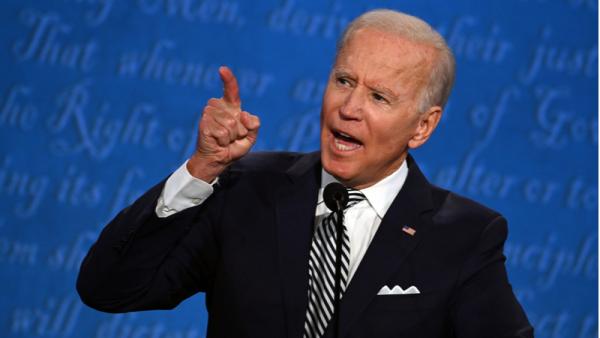No quick fix from Biden for Australia’s China trade woes
Stratos Brilakis / Shutterstock

James Laurenceson, Director, Australia-China Relations Institute, University of Technology Sydney |
This article appeared in the East Asia Forum on February 16 2021.
Hopes are high that with the Biden administration in the White House the United States might come to Australia’s rescue as China extends its Australian trade punishment into 2021.
In December 2020, President Joe Biden’s national security advisor Jake Sullivan declared that ‘America will stand shoulder to shoulder with our ally Australia and rally fellow democracies to advance our shared security, prosperity and values’. This followed reporting in The Wall Street Journal that outgoing Trump administration officials had mooted ‘an informal alliance of Western nations to jointly retaliate when China uses its trading power to coerce countries’.
Yet a sober assessment concludes that for all the genuine goodwill among Biden’s national security team, an economic coalition of the willing will struggle.
In the world of international commerce, strategic friends can be the fiercest rivals. Just a few weeks after Sullivan hinted at solidarity, he clarified that Biden’s foreign policy would be ‘measured against a simple metric: will it make the lives of working people better, safer, easier?’
He wasn’t talking about those in the western suburbs of Sydney or on rural properties in the Barossa Valley.
When Australian wine was hit with Chinese tariffs of 200 percent in November 2020, the US National Security Committee enthusiastically tweeted that they would be serving Australian wine at a holiday reception. But they didn’t tell Californian winemakers to stand down: Australia’s AU$1.1 billion (US$850 million) share of China’s massive imported wine market is now up for grabs.
For Australian commentators accustomed to thinking of its ‘Five Eyes’ partners as powerful military and intelligence actors, the prospect of the group moving into the economic arena is an intoxicating one. But their bargaining position is undermined by the reality of their relatively small status in many markets.
Consider coal, the latest Australian export that China has cut off. In the global thermal coal trade, Indonesia is the superpower and accounted for 41 percent of seaborne exports in 2019. Even if miners in the United States, Canada, the United Kingdom and New Zealand refuse to supply Chinese power generators, the only response it would draw from Beijing is chuckles. In the case of coking coal, lost Australian sales to China are already being snapped up by Canadian suppliers.
One prominent Australian strategist suggested that when a country faced Chinese boycotts, ‘collaborating nations would agree to purchase the goods or provide compensation’.
Good luck to any president or prime minister wishing to explain to privately-owned companies why they must buy goods they don’t want.
Recent years have also revealed a United States that is increasingly sensitive to China’s growing power. Tariffs slapped on US$350 billion worth of Chinese imports outside of World Trade Organization rules are just one example. Another is a ballooning in the number of Chinese companies targeted by the US Department of Commerce’s ‘entity list’ — including entities determined to undertake ‘activities contrary to US national security and/or foreign policy interests’ — to now more than 300.
The obvious danger for Australia is getting bogged down with the United States in the economic equivalent of the forever wars against its largest trading partner, this time spilling treasure rather than blood.
Managing Chinese economic coercion should be a focus of policy attention in Canberra. And how best to work with strategic partners is part of that. Perhaps the most promising element is enhancing the resilience of supply chains for essential or strategically important goods and services in a way that is also cost-effective.
But when it comes to China’s targeting of Australia’s exports, the most productive approaches will lie closer to home.
Australia can start by not panicking. The total value of Australia’s goods exports to China fell by only 2 percent last year as China proved unwilling or unable to wean itself off big-ticket items like iron ore.
Next, Australia can strive to address the source of the risk. Michael Wesley delivered a blunt assessment that ‘the place to start in reconceptualising our relationship with China is by admitting our strategy so far has failed’. Plenty of countries in the region are balancing economic interests with China and security and strategic interests with the United States. But Australia is an outlier in facing unprecedented levels of Chinese trade aggression. This might prompt a reconsideration of whether the current approach is the best one available. The point isn’t to blame Canberra for Beijing’s bad behaviour. Rather, it’s about protecting Australia’s interests by not doubling down on an inferior strategy for addressing the challenge.
Australia can also work to mitigate the risk that remains. Trade diversification is a worthy objective. Tapping other markets has already proven feasible for producers in some industries like barley, beef and coal. But the difficulty of this strategy at an aggregate level is revealed by new data showing that China’s share of total Australian goods exports increased to a record high of 40 percent amid the trade attacks.
The real diversification challenge for Australia is in expanding the range of products the country can competitively supply to international markets. A serious innovation agenda is needed. Culling the Austrade network in China and ramping it up in India or Indonesia won’t quite cut it.
Author
Professor James Laurenceson is Director of the Australia-China Relations Institute at the University of Technology Sydney.

